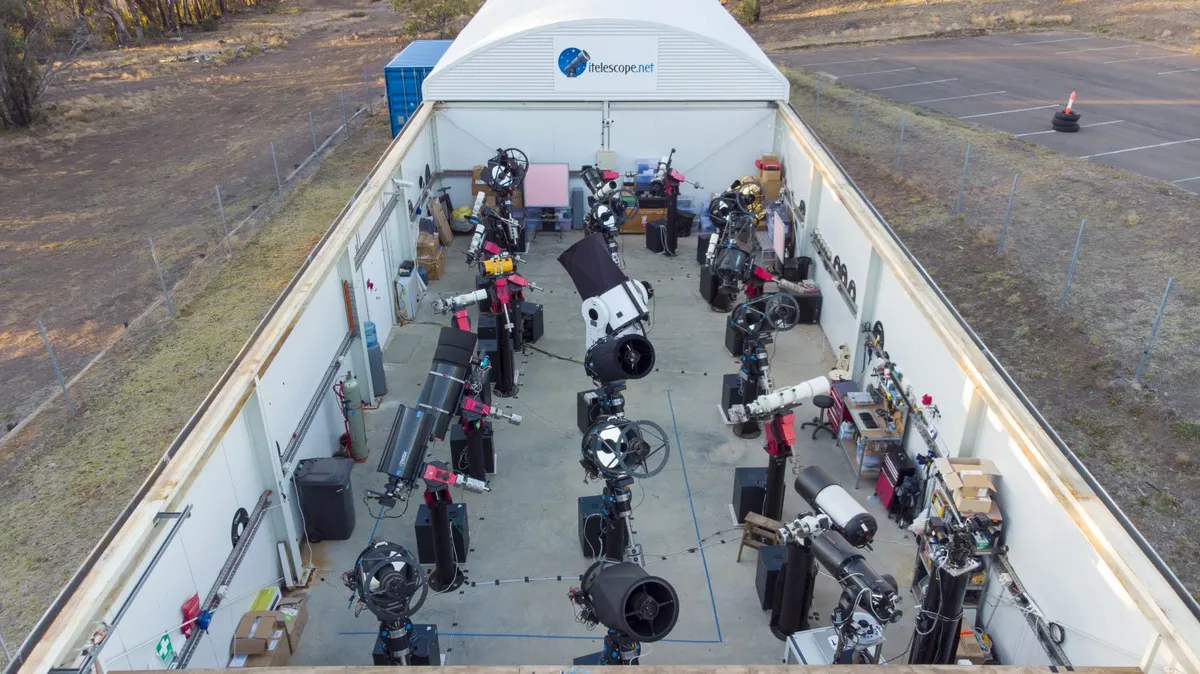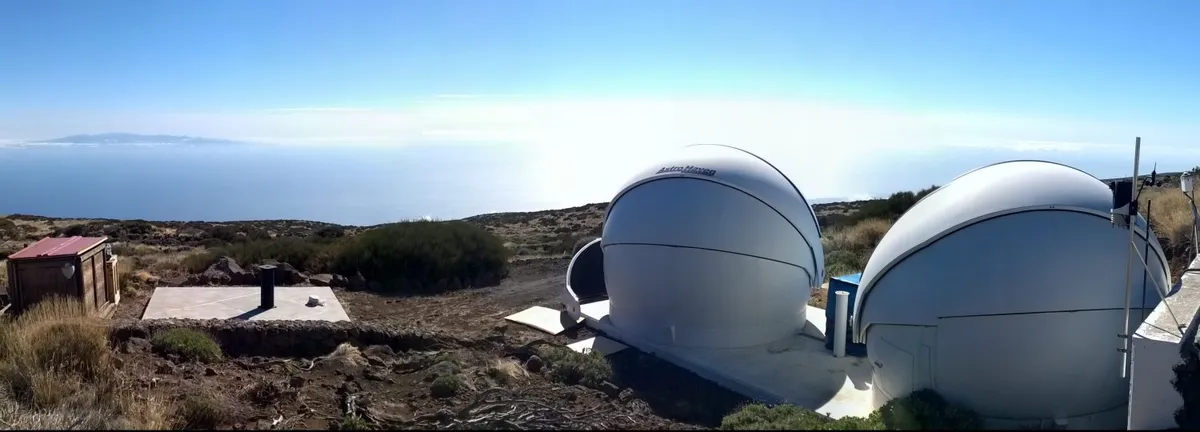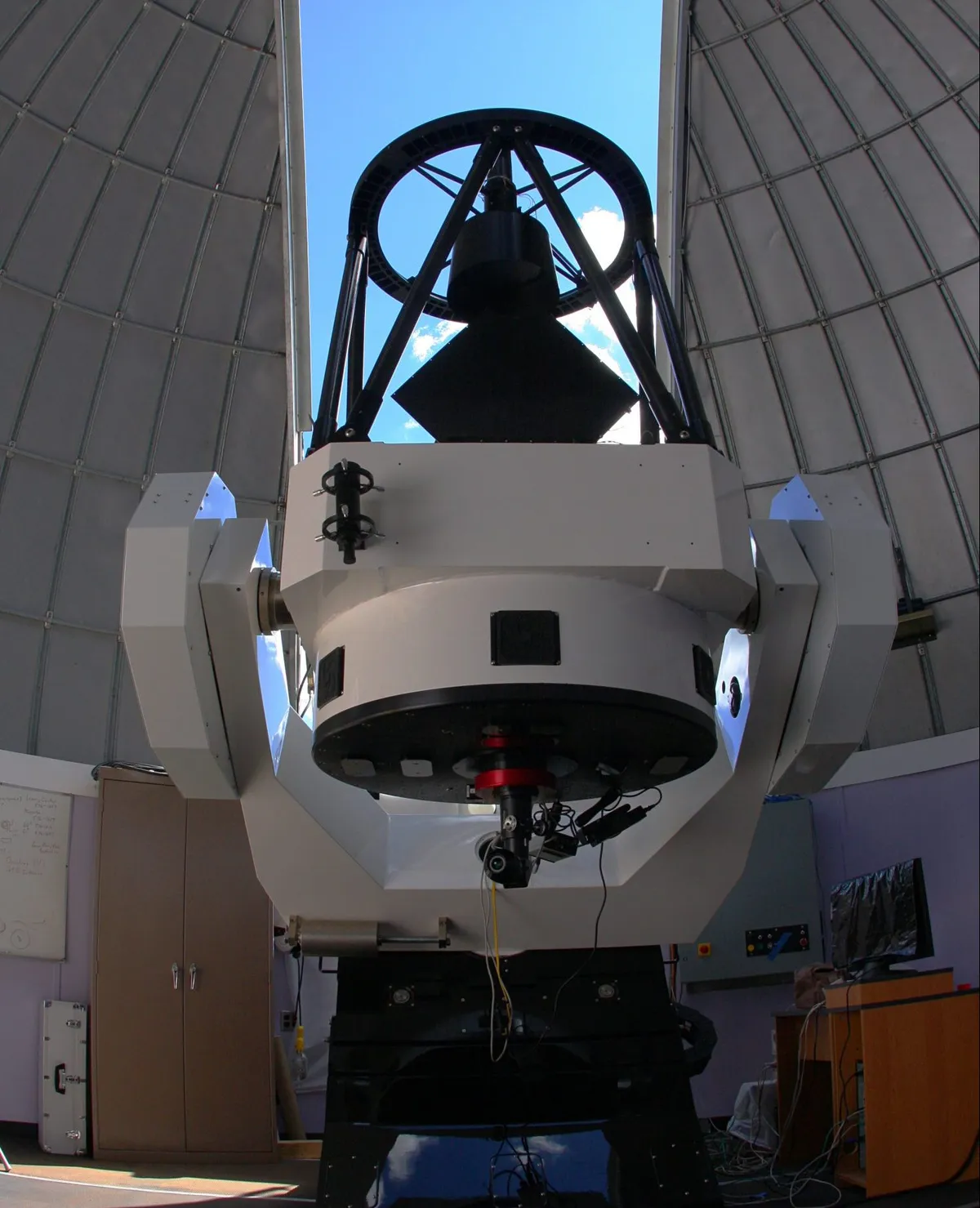Astrophotographers often dream of taking that impossible image: one too faint for local light-polluted skies or beyond the capability of the telescope they can afford. There is a solution to these woes: remote astronomy.
There are several observatories around the world that let you control their scopes from the comfort of your own computer at home for a reasonable fee, and sometimes even for free.
If you aren't able to leave the house for whatever reason, or travelling around the globe to capture an amazing astrophoto just isn't realistic, you can take up remote astrophotography and, as long as you have a decent computer and internet connection, control remote telescopes around the world and make the most of amazing dark sky locations.
Here are some of the best remote observatories available:
4 amazing online observatories
1
MicroObservatory

The MicroObservatory Robotic Telescope Network, operated by the Harvard Smithsonian Center for Astrophysics with support from NASA, relies on a network of automatic 6-inch reflectors along the east and west coasts of the US, each equipped with a CCD camera.
As it’s aimed at beginners and students it is free to use.
You do not have real-time access to the telescopes, but instead schedule ‘jobs’ that are automatically distributed to the telescopes depending on capacity.
You select from a list of objects comprising planets, the Moon (if visible) and a handful of deep-sky objects.
There is a choice of four different exposure times and whether you would like to use a filter or not.
The images are available as GIFs or in their raw FITS format via a common directory on the project’s website.
There is still an older ongoing project that allows you to set some more detailed parameters, but for this you have to register and propose a research project. The proposals are reviewed three times per year.
Pros: Good starting point; free and easy access
Locations: Various in the US
Equipment: Five 6-inch reflectors
mo-www.cfa.harvard.edu/MicroObservatory
2
iTelescope

iTelescope is probably the most developed service on our list.
Signing up gets you access to a number of different reflectors and refractors ranging from 3.5 inches to 27.5 inches in aperture and with varying focal lengths.
Its sites are in the US, Spain and Australia, allowing you to enjoy the wonders of both northern and southern skies.
All are situated in areas with little light pollution and good seeing conditions, and 70 per cent of nights are clear.
A basic knowledge of telescopes and astrophotography is helpful since the system allows you to alter almost all imaginable parameters yourself.
You are only charged for the time you actually take photos, and discounts of up to 50 per cent are offered when the Moon is bright.
Each telescope type will cost a certain amount of points, for example the T3, a Takahashi TOA-150, will cost 100 points per hour of imaging time.
Once the images are taken they are available in TIFF and FITs formats on iTelescope’s ftp server, or can be uploaded directly to your own cloud drive.
Pros: Many different telescopes and locations; full control and flexibility
Locations: US (California & New Mexico), Spain, Australia (Siding Spring)
Equipment: 18 telescopes; refractors and reflectors ranging from 3.5 to 27.5 inches
3
Slooh

Slooh regularly livestreams key astronomical events being observed by its telescopes, such as meteor showers and eclipses.
When you control your own scope, the feed is also relayed on the website in real-time and full colour to everyone in the community.
Slooh’s main observatory is located on Mount Teide in Tenerife, its scopes ranging from a 3.3-inch refractor to a 20-inch reflector, as well as meteor cams and a dedicated solar scope.
Another observatory in Chile with a 14-inch reflector and a 3.5-inch refractor provide access to the southern sky.
CCD cameras mounted on the telescopes provide high resolutions of up to 4,096x4,096 pixels.
You can choose from different membership options, which are available here.
You do not have to pay per use, but you may be restricted in the number of images you can take depending on the type of membership you opt for.
It is also possible to schedule objects for times when you would be otherwise unavailable.
The finished images are stored in your personal storage area on the website. They can be downloaded in FITs format if you subscribe for the Astronomer membership, but Apprentice and Slooh Crew members are limited to PNGs.
Pros: Reasonable prices; free membership options
Locations: Tenerife, Chile
Equipment: 10 telescopes; a range of reflectors, refractors, and a solar scope, plus all-sky cams
4
Schulman Telescope

The Schulman Telescope is hosted by the University of Arizona's Mount Lemmon SkyCenter in the US and is located on nearby Mount Lemmon at an elevation of 2,800m.
The location provides you with a dark sky, good seeing and good weather.
Between September and June, 70 per cent of the nights should be clear, something you can check via its website.
The telescope has an aperture of 31.5m and a remarkable focal length of almost 6m.
As with iTelescope and Lightbuckets you are given full control over each telescope, allowing you to adjust all of the parameters yourself.
Booking enquires are made via email or telephone and there are two operating modes, real-time or scheduled observation.
The former allows you to quickly influence your observation by adjusting parameters on the fly, whereas the latter is quite convenient if you have less time.
Simply schedule your observation plan and it will be queued and executed automatically as soon as possible.
There’s no need for you to be in front of your computer.
Pros: Good location; full control of parameters; professional observatory
Location: Mount Lemmon, Arizona
Equipment: One telescope; 31.5-inch reflector with 5,695mm focal length
skycenter.arizona.edu/content/remote-observing
Martin Mobberly is an astronomy author and astrophotographer. You can see his work online here.
